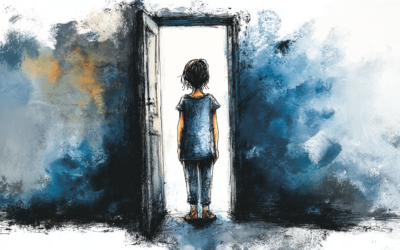This article marks the beginning of a series exploring stigma—what it is, why it persists, and how it can be dismantled. Across this series, we will delve into the layers of stigma surrounding issues like substance use disorders, mental health, and other social challenges. Along the way, we’ll examine how stigma has evolved, its profound impact on individuals and communities, and the pathways to de-stigmatization.
Stigma is a force that permeates society, shaping attitudes, behaviors, and policies. It isolates, marginalizes, and often silences those who need support the most. But to dismantle stigma, we first need to understand it. What exactly is stigma? How does it function? And why does it continue to wield so much power in our lives?
Defining Stigma: The Silent Divider
Stigma is a social process that marks certain individuals or groups as different, lesser, or unworthy of full participation in society. Sociologist Erving Goffman described it as an attribute that reduces someone “from a whole and usual person to a tainted, discounted one.” Yet stigma isn’t just an individual experience—it operates as a societal mechanism, shaping how communities define who belongs and who doesn’t.
Bruce Link and Jo Phelan’s framework breaks down stigma into a process:
- Labeling: Identifying differences, such as a health condition or behavior, that stand out from societal norms.
- Stereotyping: Associating those differences with undesirable traits—such as viewing individuals with substance use disorders as reckless or untrustworthy.
- Separation: Reinforcing an “us vs. them” mentality, isolating stigmatized individuals from the broader community.
- Discrimination: Limiting opportunities and resources for those who are stigmatized through social behaviors, laws, and institutional practices.
These processes don’t arise spontaneously—they’re cultivated through cultural narratives, institutional policies, and everyday actions.
The Many Layers of Stigma
Stigma is not a singular concept; it operates across multiple dimensions:
- Public Stigma: Society’s collective attitudes that devalue and exclude groups, like the widespread belief that people with substance use disorders lack moral character or self-discipline.
- Self-Stigma: Internalized public stigma, leading individuals to feel shame, guilt, or diminished self-worth.
- Structural Stigma: Discrimination embedded in systems, policies, and institutions, such as laws that criminalize substance use instead of treating it as a public health issue.
- Stigma by Association: Judgment passed on those connected to stigmatized individuals, such as family members or caregivers.
These layers reinforce one another, creating a web of exclusion that is difficult to escape.
How Stigma Shapes Lives
The consequences of stigma are pervasive, affecting personal lives, communities, and society as a whole:
- Healthcare Access: Fear of judgment prevents many from seeking treatment for substance use disorders. Stigma in healthcare settings can exacerbate this, as patients may encounter bias from providers.
- Economic Opportunities: Stigma limits access to jobs, housing, and financial resources. Employers may view those in recovery as unreliable, even when evidence proves otherwise.
- Mental Health: Internalized stigma amplifies feelings of shame and worthlessness, contributing to anxiety, depression, and isolation.
The societal costs are equally stark. Communities miss out on the potential contributions of stigmatized individuals, and healthcare systems bear the burden of untreated conditions. Stigma doesn’t just harm individuals; it weakens the collective fabric of society.
Why Stigma Persists
Stigma endures because it feeds on ignorance, fear, and deeply ingrained cultural values:
- Fear of the Unknown: When people lack understanding, they rely on stereotypes to make sense of complex issues. Media portrayals of substance use often reinforce fear rather than empathy, presenting users as dangerous or chaotic.
- Cultural Narratives: In many societies, personal responsibility is celebrated, leading to a “blame the individual” mindset. Substance use disorders, for example, are often viewed as moral failings rather than complex health conditions.
- Institutional Reinforcement: Laws and policies that criminalize behaviors—such as substance use—further entrench stigma, casting individuals as criminals rather than people in need of support.
Even well-intentioned public health campaigns can perpetuate stigma if they focus solely on the dangers of certain behaviors without addressing the structural and psychological challenges individuals face.
The Path to De-Stigmatization
If stigma is a societal construct, it can be dismantled through intentional effort:
- Education: Public awareness campaigns that emphasize the medical and psychological nature of conditions like substance use disorders can shift attitudes from blame to compassion.
- Language: Shifting to person-first language—like “person with a substance use disorder” instead of “addict”—humanizes individuals and challenges stereotypes.
- Policy Change: Decriminalizing substance use and focusing on harm reduction can reduce stigma and improve health outcomes. Portugal’s groundbreaking approach to drug policy is a prime example??.
- Media Representation: Positive and nuanced portrayals of recovery in the media can help challenge stigma and inspire empathy?.
The Road Ahead
This article sets the stage for the series by unpacking the foundations of stigma. In the coming installments, we’ll explore its many facets, from the stigma around specific substances to the impact of structural barriers, and the ways social marketing campaigns and policy changes can create lasting change.
Stigma is a powerful force, but it is not immutable. By understanding its roots and addressing it at every level—individual, societal, and institutional—we can create a more compassionate and equitable world. The question is not whether change is possible but whether we are willing to confront the biases that sustain stigma.



